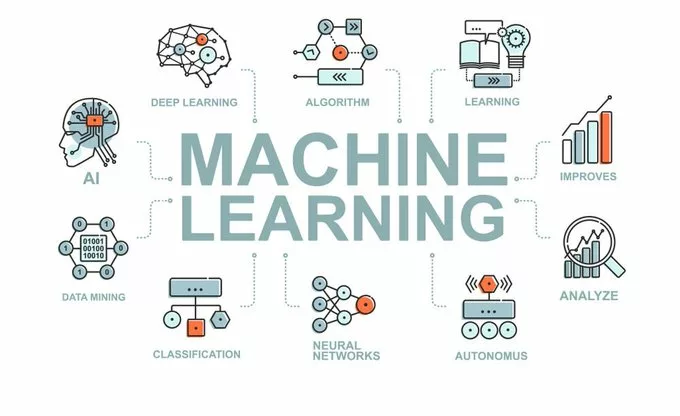|
Getting your Trinity Audio player ready...
|
Writes Fakunle John Aremu
Let us talk about machine learning (ML) and how it is different from traditional software. It is not as complicated as it might sound! Both are super useful in their own ways, but they work quite differently under the hood. Once you get the hang of it, you will see how these differences can be a game-changer for businesses, education, healthcare, and even scientific research. Let us break it down one after the other.
How Traditional Software Works
Traditional software follows a straightforward set of rules. You (or a programmer) tell it exactly what to do, step by step, and it sticks to that script like a loyal assistant. For example, think of a basic payroll system. You input the hours worked and the pay rate, and it calculates salaries based on a pre-defined formula. Simple, right?
But here is the catch: traditional software can only do what it has been explicitly programmed to do. If you want it to handle something new, you have to go back and rewrite the code. It is great for predictable tasks such as managing accounts, running reports, or automating repetitive workflows; but it struggles with anything too complex or dynamic. It is like a highly efficient, rule-following worker who cannot think outside the box.
How Machine Learning (ML) Works
Machine learning flips the script. Instead of being explicitly programmed, ML learns from data. Think of it like teaching a toddler; you show them examples, and over time, they figure things out on their own. For instance, if you want an ML model to recognize cats in photos, you don’t write a detailed list of “cat” rules. Instead, you feed it with thousands of labeled images of cats and non-cats. The model analyzes patterns in the data and it eventually gets pretty good at spotting cats in new pictures.
What makes ML so exciting is its ability to handle complexity. It is particularly useful in situations where creating explicit rules is either impossible or impractical. For example, ML is excellent at recognizing patterns, making predictions, and even adapting to changing circumstances. However, it is not a magic wand! ML needs a lot of high-quality data and careful fine-tuning to perform well. If this is not done, it will give poor results.
Why This Difference Matters
Why should you care? The answer lies in the unique strengths of ML and how they can be applied in the real world. Here are how this plays out across various fields:
Benefits for Businesses
Businesses are all about efficiency, innovation, and staying competitive. Machine learning is like their secret weapon.
Take customer service, for example. Traditional software might have a rigid chatbot that can answer a set of pre-programmed questions. But ML-powered chatbots, like those used by e-commerce giants, can understand natural language, learn from customer interactions, and improve over time. They are not just answering questions; they are anticipating needs.
Or think about predictive analytics. Retailers use ML to forecast demand, optimize inventory, and even recommend products. You know those “you might also like” suggestions on shopping websites? That is ML in action, which helps the business to drive sales and enhance customers’ experience. Imagine a store using ML to predict trends like knowing which fashion items will be in high demand next season. ML makes businesses to stay one step ahead.
Marketing is another area where ML shines. Personalized email campaigns, dynamic pricing, and customer segmentation are now more effective than ever, thanks to ML’s ability to analyze consumer behavior in real-time. For instance, platforms like Shopify and HubSpot use ML to recommend the best times to send emails or target specific customer groups. These help the business to increase engagement and conversions.
Benefits for Education
Education is another area where ML is making waves. Imagine personalized learning at scale. Instead of a one-size-fits-all approach, ML can analyze how individual students learn and adapt content to suit their pace and style.
A great example is Duolingo. This language-learning app uses ML to figure out learners’ specific challenges and tailors lessons accordingly. If you keep messing up on past tense verbs in Spanish, it will keep throwing similar exercises your way until you nail it. It is like having a personal tutor in your pocket.
ML can also identify learning gaps. For example, in classrooms, platforms like Khan Academy use ML to track student progress and suggest where they need extra practice. Teachers can use these insights to provide targeted support and help every student to succeed.
In higher education, ML is being used to predict student outcomes. Universities analyze data to identify students at risk of dropping out and intervene early. This is not just good for the students; it also helps the institutions to improve retention rates.
Benefits for Healthcare
In healthcare, ML is not just helpful. It is saving lives. One standout example is in medical imaging. Traditional software might be able to highlight irregularities in an X-ray based on predefined criteria. But ML can go further. It is being used to detect conditions like cancer, often with accuracy levels that rival or even surpass human doctors.
Take Google’s DeepMind. They developed an ML model that can identify over 50 eye diseases from retinal scans. This is not just faster; it is also opening up access to better diagnostics in areas where specialist doctors are in short supply.
ML is also revolutionizing drug discovery. Traditional methods can take years and cost billions. ML models can analyze chemical compounds, simulate their interactions, and predict which ones might work as medicines. This accelerates the process dramatically. For example, during the COVID-19 pandemic, ML was used to identify potential treatments much faster than traditional approaches.
Personalized medicine is another example. ML can analyze patient data, such as genetic information, to recommend treatments tailored to an individual’s unique needs. This is transforming how we approach chronic diseases like diabetes and cancer.
Benefits for Scientists
Scientists love ML because it helps them to tackle complex problems that were previously out of reach. For example, climate researchers use ML to analyze massive datasets, like satellite images and weather patterns, and to predict natural disasters more accurately. This is not just theoretical; it is helping communities to prepare for hurricanes, drought, floods, earthquakes, and wildfires.
In astrophysics, ML is being used to sift through enormous amounts of data to identify new planets, galaxies, and even black holes. Without ML, analyzing this kind of data manually would take decades.
In Environmental Science, ML models are helping scientists to track deforestation, monitor air quality, and even predict the spread of diseases that are linked to climate change. These insights are crucial for creating sustainable policies and solutions.
Real-World Applications
Let us bring it all together with a few examples of real-world applications:
- Netflix: Ever wonder how Netflix always seems to know what you will want to watch next? That is ML at work. It analyzes your viewing habits and compares them with others to suggest the movies and shows that you are likely to enjoy.
- Amazon: Their product recommendations and dynamic pricing strategies are powered by ML. This is the reason that you will see different prices for the same product at different times. The system is constantly learning and adapting to maximize sales.
- Smart Assistants: Think Siri, Alexa, or Google Assistant. They are using ML to understand your voice commands and improve their responses over time. They are not perfect, but they are getting better every day.
- Spotify: Ever tried Spotify’s Discover Weekly playlist? It is an ML-driven feature that curates songs that you have never heard but are likely to enjoy based on your listening history.
Conclusion
So, what is the bottom line? Traditional software is like following a recipe; It is reliable and predictable. Machine learning, on the other hand, is more like hiring a chef who learns your taste and experiments with new dishes over time. Both have their place, but ML’s ability to adapt and learn makes it uniquely powerful in today’s fast-paced, and data-driven world.
Whether you are running a business, teaching students, treating patients, or conducting groundbreaking research, Machine Learning has something to offer. It is not just a buzzword; it is a tool that is reshaping the way we solve problems and create value. And honestly, this is just the beginning.
About the Author
Fakunle John Aremu is a Senior Agribusiness and AI Integration Management Consultant with over 12 years of experience working with business owners, development organizations, and governments in Africa. He is the author of the book: “The Business Blueprint for Artificial Intelligence” A Simplified Guide to Proven AI Strategies, Business Models and Real-World Applications. The book is written in English, French, Spanish, and Portuguese languages. He is also the Founder of Cedro Royal. For further information, send an email to [email protected]; or Whatsapp/Call +2348063284833






